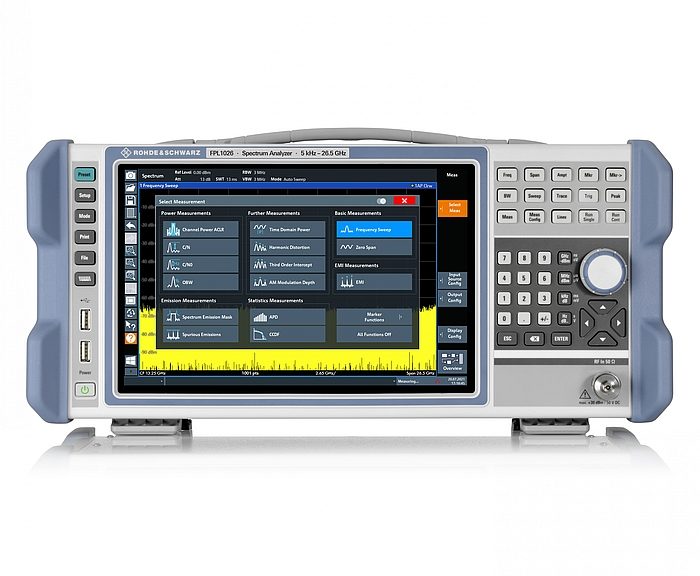- Rohde & Schwarz is expanding its R&S FPL1000 family of spectrum analyzers with new models covering a frequency range up to 26.5 GHz.
- The two new models in this family offer frequency ranges from 5 kHz to 14 GHz and from 5 kHz to 26.5 GHz.
- These R&S FPL1000 series analyzers are part of the R&S Essentials instrument line. They combine the functionality of a benchtop instrument with the compactness of a portable device.
The R&S FPL1000 can be used to perform various types of measurements in the most common test applications. This spectrum analyzer has a 40 MHz signal analysis band. It is battery-operated and has an integrated signal generator for signals up to 7.5 GHz.
It offers measurement functions including: spectrum analysis with measurement functions such as channel power, ACLR, signal-to-noise ratio, spurious, harmonic distortions, third-order intercept point, AM modulation depth. Capabilities extend further to include statistical ADP and CCDF analysis and marker functions.
The spectrum analyzers of the R&S FPL1000 family have a typical phase noise of -108 dBc at 10 kHz offset (1GHz carrier), together with displayed average noise level (DANL) of -163 dBm using the optional pre-amplifier.
Measurement applications are also available for analysing analogue and digitally modulated signals. The R&S FPL1-K7 option turns the R&S FPL1000 into an analogue modulation analyzer for amplitude, frequency and phase-modulated signals. The base unit´s I/Q analyzer supports the magnitude and phase presentation of I and Q within the analysis bandwidth. The I/Q data can be exported for further analysis with third-party software products.
The R&S FPL1-K54 provides EMI measurements for diagnostics of RF interference.
The R&S FPL1-K70 vector signal analysis option also characterises digitally modulated single-carrier signals.
There are additional options for multi-modulation analysis and measurement of BER on PRBS data.






